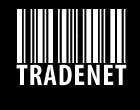BLOGSHARP: Cutting Edge Posts

Traded Endowment Policies Market Provide Liquidity
2007-03-08 10:33:40( Insurance )
An endowment policy is similar to a term life policy but includes an accelerated cash-values accumulation feature. In selling endowment policy, an insurer will specify a term of at least 10 years or an age such as 65 or 70. At the end of the specified term, the face amount is paid, either as a lump sum or as annual annuity, whether or not you, as the insured, remain alive.
Premiums for an endowment life policy are higher than an ordinary term life policy or whole life insurance policies, because they include a payment for the life insurance plan and a deposit in an accelerated savings plan. The insurance company takes the deposit and reinvests it in higher-yielding financial instruments, like stocks and bonds.
At maturity, you expect the amount you receive to be enough to cover your future needs – perhaps to fully settle your home mortgage or pay for your child’s college education.
This is the plan. But things do not always work out that way. All too often financial pressures compel you to take stock of your assets and see what can be converted to cash immediately to help you meet pressing financial obligations. The endowment policy you have bought, with its term life policy plus cash-accumulation features, can be one source of cash.
In recent years, a market has developed for traded endowment policies, to help people meet their immediate-cash requirements. You, as seller, want immediate cash from your policy. A buyer is willing to buy your policy because it has a guaranteed amount to be paid at maturity which will be higher than the amount he pays you, so he makes a profit.
Traded endowment policies may work to your disadvantage, if you are a seller. In selling endowment policy before maturity, you will have to sell at a discount otherwise the buyer will not buy since he will not profit. You will probably want to recover at least all the premiums you have paid, plus maybe a small profit on what you have invested thus far. But that’s about it. All other future profits will go to the buyer.
If you are buying on the traded endowment policies market, you should be careful. Make sure you buy a life policy at the right price. You must compare how much the policy is worth when it matures with how much you pay for it. The traded endowment policies market is being flooded by sellers of used endowments, so that there are policies that sell for as little as 10% of the face value.
A life policy owner should balance his cash requirements with the proceeds that he may get out of selling endowment policy. He may get too little. Or he may profit. But this is the way the market works. When you need liquidity, the traded endowment policies market is there to help you get it.
All rights Reserved © Tradenet Services srl
Do not duplicate or redistribute in any form.
Blog
Tags
- Arts (73)
- Automobiles (375)
- Beauty (46)
- Business (989)
- Careers (12)
- Charity (71)
- Computers (788)
- Dating (153)
- Education (333)
- Entertainment (257)
- Family (39)
- Financial (2171)
- Games-Toys (7)
- Garden (68)
- Health (439)
- Hobbies (102)
- Home (311)
- Insurance (662)
- Legal (562)
- Online Shopping (67)
- Pharmeceutical-Medical (393)
- Real Estate (263)
- Sports (48)
- Style-Fashion (4)
- Technology (238)
- Telephony (235)
- Travel (283)
- Web Hosting-SEO-Web Design (786)
Archivio
- 2007
- 2008
- 2009
Tradenet Services srl 02860350244 Via Marconi, 3 36015 Schio (VI) Italy
+39-0445-575870 +39-0445-575399